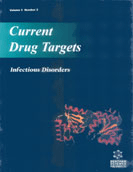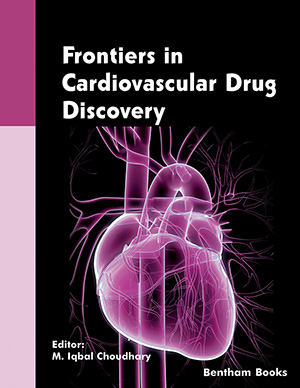
Abstract
Chronic obstructive pulmonary disease is a major cause of morbidity and mortality worldwide. The mechanisms by which cigarette smoke leads to the irreversible dilatation and destruction of terminal airspaces of the lung are being unravelled largely as a result of the explosion of studies in animals. At the forefront of this has been the use of genetically manipulated mice, and the evolution and understanding of different models of emphysema. This review will summarise the current models of emphysema.
Keywords: Animal models, chronic obstructive pulmonary disease, emphysema, pathogenesis, proteinase, cigarette smoke, genetic engineering
Current Drug Targets - Inflammation & Allergy
Title: Animal Models of Pulmonary Emphysema
Volume: 4 Issue: 6
Author(s): Ravi Mahadeva and Steven D. Shapiro
Affiliation:
Keywords: Animal models, chronic obstructive pulmonary disease, emphysema, pathogenesis, proteinase, cigarette smoke, genetic engineering
Abstract: Chronic obstructive pulmonary disease is a major cause of morbidity and mortality worldwide. The mechanisms by which cigarette smoke leads to the irreversible dilatation and destruction of terminal airspaces of the lung are being unravelled largely as a result of the explosion of studies in animals. At the forefront of this has been the use of genetically manipulated mice, and the evolution and understanding of different models of emphysema. This review will summarise the current models of emphysema.
Export Options
About this article
Cite this article as:
Mahadeva Ravi and Shapiro D. Steven, Animal Models of Pulmonary Emphysema, Current Drug Targets - Inflammation & Allergy 2005; 4 (6) . https://dx.doi.org/10.2174/156801005774912860
| DOI https://dx.doi.org/10.2174/156801005774912860 |
Print ISSN 1568-010X |
| Publisher Name Bentham Science Publisher |
Online ISSN 1568-010X |
 6
6Related Articles
-
Interatrial Block in the Modern Era
Current Cardiology Reviews 3D Printing in Medical Applications
Current Medical Imaging Critical Illness in Obstetric Patients: Venous Thromboembolism in Pregnancy
Current Women`s Health Reviews Real-time Strain-encoding Cardiovascular MRI for Assessment of Regional Heart Function in Tetralogy of Fallot Patients
Current Medical Imaging Transseptal Access to the Left Atrium: Tips and Tricks to Keep it Safe Derived from Single Operator Experience and Review of the Literature
Current Cardiology Reviews Nerve Growth Factor: A Focus on Neuroscience and Therapy
Current Neuropharmacology Surgical Management of Heart Failure
Current Cardiology Reviews Creation of Cultures Containing Mutations Linked with Cardiovascular Diseases using Transfection and Genome Editing
Current Pharmaceutical Design Pathophysiology of Post-Operative Low Cardiac Output Syndrome
Current Vascular Pharmacology Veno-Arterial Extracorporeal Membrane Oxygenation in the Adult: A Bridge to the State of the Art
Current Cardiology Reviews Antiplatelet Therapy in Children: Why So Different from Adults’?
Current Pharmaceutical Design Modeling Cardiovascular Development: New Approaches are Making In Vitro En Vogue
Current Cardiology Reviews Medical Treatment of Aortic Aneurysms in Marfan Syndrome and other Heritable Conditions
Current Cardiology Reviews Cardiac Autonomic Nervous System in Heart Failure: Imaging Technique and Clinical Implications
Current Cardiology Reviews Relationship Between Body Mass Index and Reproduction
Current Women`s Health Reviews Arrhythmias and Left Ventricular Hypertrabeculation/Noncompaction
Current Pharmaceutical Design SHP-2 Regulates Growth Factor Dependent Vascular Signalling and Function
Mini-Reviews in Medicinal Chemistry Frequency of Cardiac Arrhythmias in Children with Cardiological Consulting and Containing Electrocardiogram
Cardiovascular & Hematological Disorders-Drug Targets Autophagy Dysfunction and its Link to Alzheimer’s Disease and Type II Diabetes Mellitus
CNS & Neurological Disorders - Drug Targets Safety and Efficacy of Intracoronary Human Umbilical Cord-Derived Mesenchymal Stem Cell Treatment for Very Old Patients with Coronary Chronic Total Occlusion
Current Pharmaceutical Design























